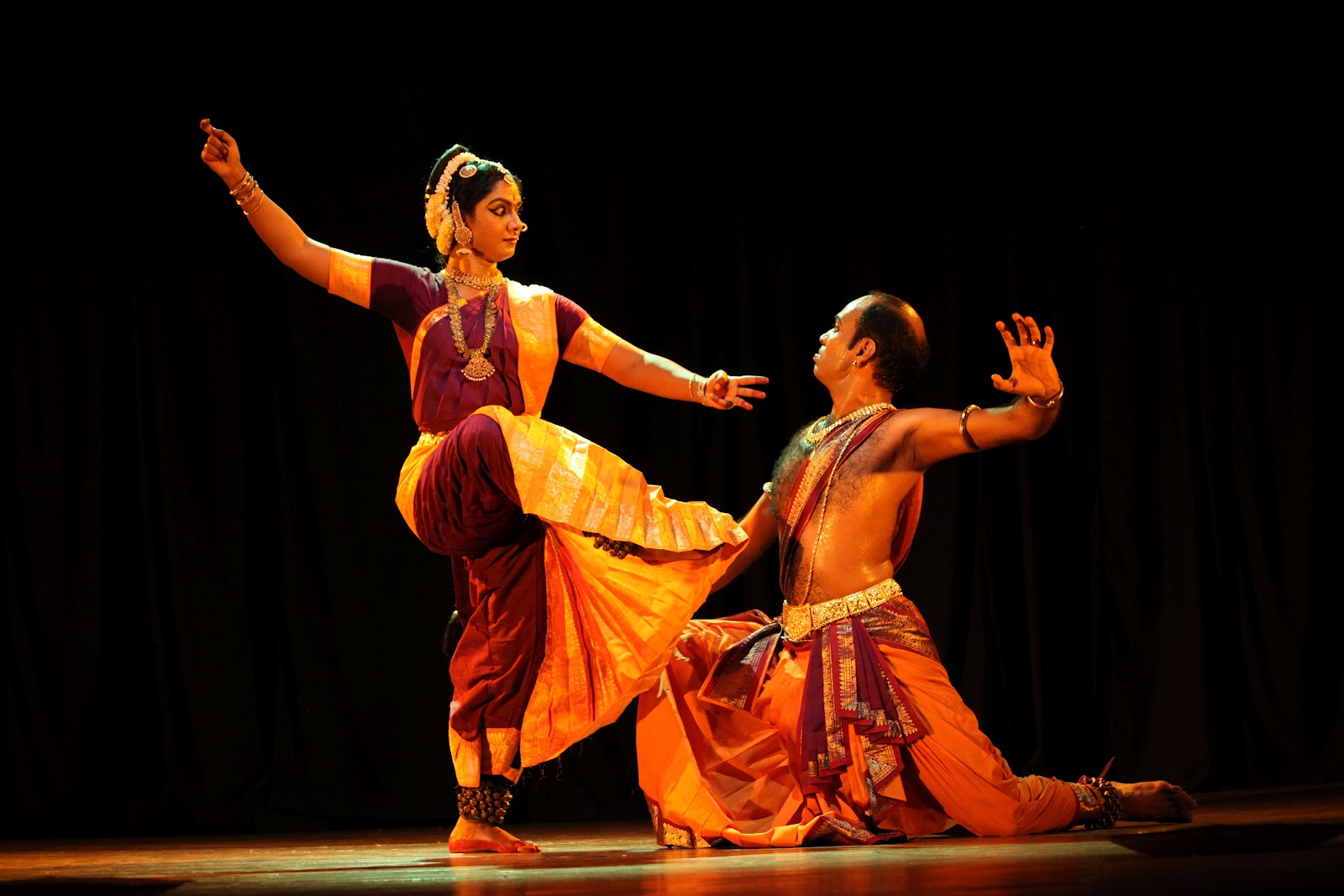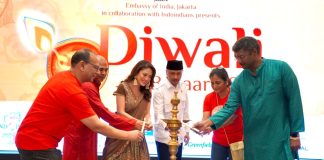by Mehru Jaffer
If it were not for artistes like Anuradha Nehru, one of India’s seven classical dance forms would have remained restricted to a small village in a southern state of the Indian sub continent.But for over two decades Anuradha has been tirelessly performing Kuchipudi, the ancient dance that traces its roots back to second century BC, around the world. The dancer with eyes like that of a doe and form as slender as a reed closely resembles an apsara, those mythical creatures whose entire life is devoted to song and dance in praise of the creator.
She is no stranger to Jakarta. Anuradha first came
here in 1982 when her father was a consultant to the
International Rice Institute. A student then of Public Health and Nutrition at an American university, she completed her thesis on vitamin A deficiency amongst Indonesians and worked for a while at the United Nations Children’s Fund (UNICEF) offices here.
Those years in Jakarta seem flooded with other magical
moments as well like her meeting with Vikram, a descendant of Jawaharlal Nehru, founding father of modern India and the country’s first head of state, who is now her husband. After marrying Vikram, a senior economist at the World Bank, Anuradha stayed on in Jakarta till 1985 when she learnt Balinese dance at a school in Kebayoran Baru and performed for a show organised by Guru Sukarnoeputra.
But it was in Washington really that she was able to make a home away from her native India. It was possible to give performances regularly, including at institutions like the National Geographic and the Smithsonian Institute and also to witness a wide variety of cultural events by other artistes. The greatest feather in her cap was the founding by herself of Kalanidhi Centre for the Performing Arts where she was joyously engaged in teaching Kuchipudi to dozens of young dancers.
“For me to relocate from Washington was a very major decision. But I decided to return to Jakarta from Washington for the sake of my family and the friends I had made here,” Anuradha told The Jakarta Post on the eve of “Roots and Wings”, a performance at the Taman Ismail Marzuki (TIM). Anuradha came back to Jakarta in 1997 because she remembered the people of this country as being extremely refined and full of aesthetics.
“I thought if I have to life outside Washington I might as well live in Jakarta. I was very happy to be back,” she says. The people were still very warm and friendly but the city seems to have forgotten her art. She discovered that her Balinese dance teacher was dead and Guru Sukarnoeputra had branched out as an impresario of multiple other activities. He seemed no longer interested in just dance and music. She had to start from scratch to re-establish contacts here and
finally found the network to be able to organise this performance.
Actually many changes have occurred recently in the dancer’s life. With the performance at TIM, she feels that she will be finally shifting away from the protective shadow of Guru Vempati Chinna Satyam, her 72 year old teacher. Vempati who is a strict purist finds any kind of experimentation with the traditional dance form rather difficult to digest.
But at this stage in her life her very soul begs to be allowed to soar. Her art seems much more inspired by realities that affect her day to day life. Anuradha is keen now to explore new concepts even as she plans to continue to perform within the rules and regulations of the classical style that is more than half a millennium old. In Roots, the first part of the
performance at TIM the dancer will strictly follow in the footsteps of Siddhendra Yogi, responsible for rejuvenating Kuchipudi and popularising it along with a dedicated group of very young Brahmin boys, all devout students of the sacred scriptures. Siddhendra Yogi lived in the 14th century. He was a brilliant scholar and a deep devotee of music and dance. He was pained to see moral deprivation seep into the profession of temple dancers who had pushed the devotional act of dancing in praise of the gods, into disrepute. He took his male dancers far away into a wasteland where they earned the name of Kachelu or travelling actors and the place was called Kuchelapuri or village of the poor, a word that is come to be
pronounced Kuchipudi, the name of both the village and the dance where it originated.
In a divine revelation Siddhendra Yogi saw visions of Krishna, reincarnation of Vishnu, the god who according to ancient Hindu scriptures is the preserver of life. It occurred to him then that all love, lust and sensual desire must be sublimated to man’s only desire for god. He was filled with longing only for Krishna and composed poetry, song and dance to express
this exalted love. His compositions remain a favourite of dancers even today, especially one titled Bhamakalapa.
Kuchipudi suffered neglect during 300 years of British colonial rule. It was revived only about 50 years ago after independence when it also became fashionable for women in the country to learn dance and music with the intention of attracting a wealthy husband. But Anuradha swears that the first Indian classical dance performance that she saw as a eight year old is what made her want to be a dancer.
Anuradha looks forward to being herself in Wings, the second half of the performance at TIM when she has used all the creativity in her power to compose Deforestation. This is a theme that is inspired both by her love for the natural beauty of Indonesia and also by the tragic and ruthless destruction of forests here.
Against the background of the melodious Thillana or a piece of dance performed to the Dhanasri raga or composition of musical notes will go to evoke myriad images of the lush green floral beauty still found in here. Percussion music will soon follow to change the mood into warnings and an expression of anger at the destruction within minutes of what nature took centuries to create. The third piece is an appeal to all human beings to work for a better tomorrow and
performed to Mangallam or thanks, a composition by sitarist Ravi Shankar where he pays tribute to all the elements of nature that sustain us. Ravi Shankar is the great musician who once gave lessons in the sitar, the Indian musical instrument, also to Beatle George Harrison.
The graceful Hemamalini and energetic MVN Murthy two
other dancers from India will accompany Anuradha throughout the performance and also in the experiment with Nostalgia, a piece by Yanni, the Greek pianist from the concert, Live at the Acropolis. Anuradha has no clue as to where her new found wings will ultimately lead her. For the moment all that
concerns her really is that try, she must.






